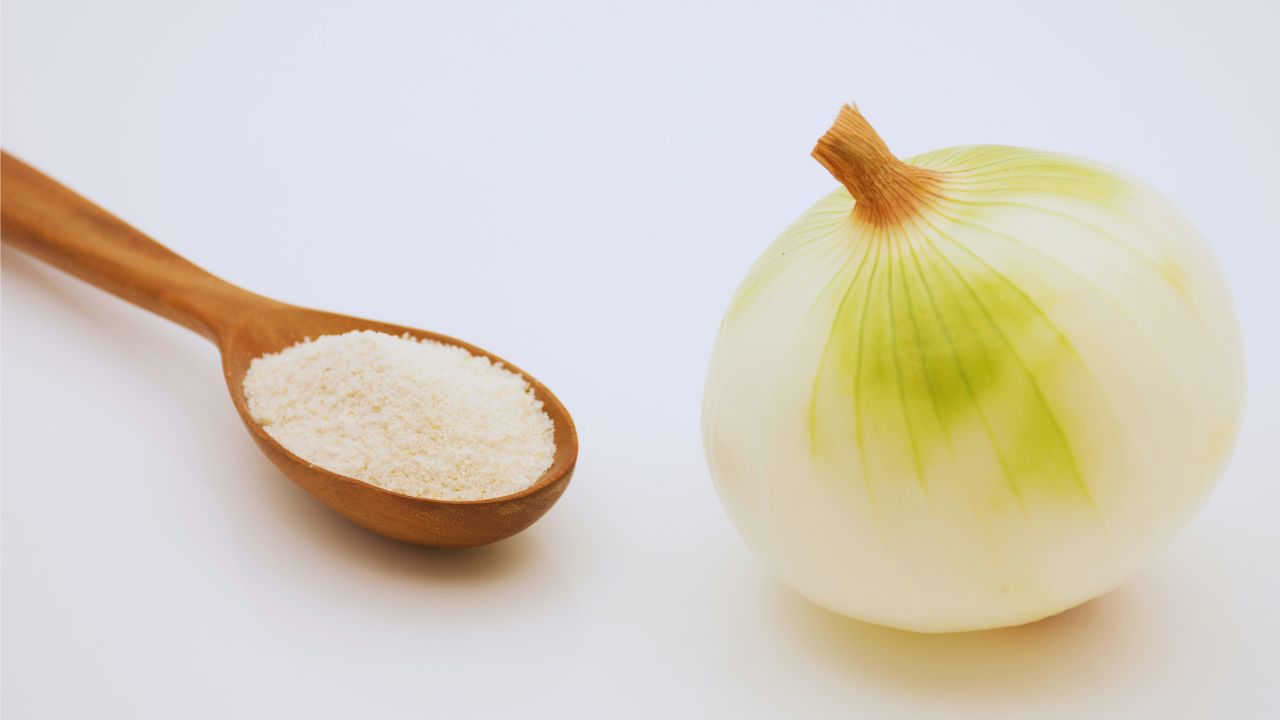Whether it’s a matter of convenience or an unexpected shortage of fresh onions, every home cook has wondered: “How much onion powder equals one onion?” This article clarifies the onion-to-onion powder conversion and some tips and tricks how to use it best, providing a reliable solution for your cooking endeavors.
Fresh Onion to Onion Powder Conversion
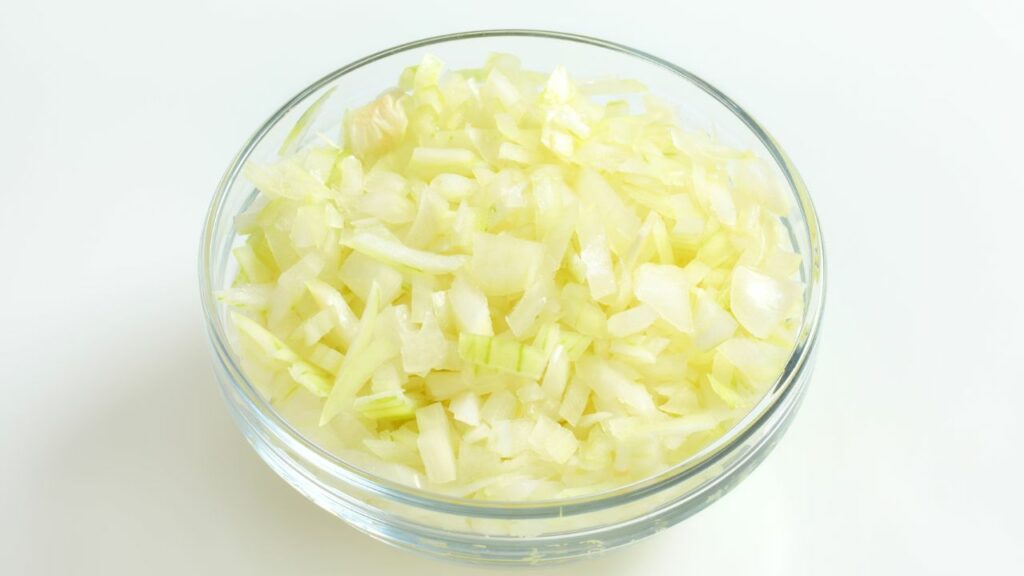
The general rule is that one tablespoon of onion powder roughly equals one medium-sized fresh onion.
It may be hard to gauge which onions are considered “medium-sized,” so keep in mind that you should deem your onion medium if, when chopped, it fills approximately one cup.
So, to summarize, One medium-sized onion is one cup of chopped onion and, in turn, one tablespoon of onion powder.
With that in mind, let’s see what that means for your recipe and cooking substitutions.
Fresh Onion Versus Powder: A Conversion Chart From Small To Large Onion
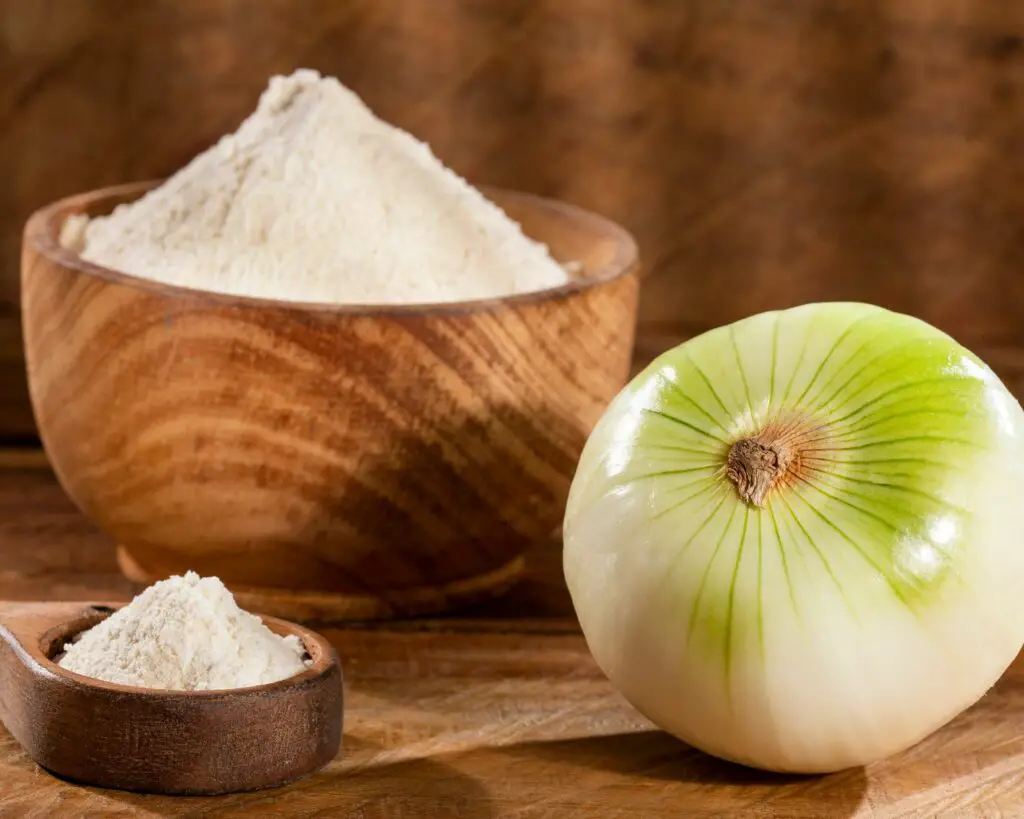
| Size | Fresh Onion (Chopped Volume) | Onion Powder |
|---|---|---|
| Medium-sized | 1 cup | 1 tablespoon |
| Small | 1/3 cup | 1 teaspoon |
| Large | 1 ½ cups | 1 1/3 tablespoons |
Remembering the three baseline onion sizes and their powder equivalents is the secret to mastering onion powder substitutions.
- Medium-sized onion: As mentioned in the table above, it equals 1 cup of chopped fresh onions and 1 tablespoon of onion powder.
- Small onion: One small onion equals 1/3 cup of chopped onions and 1 teaspoon of onion powder.
- Large onion: It can produce roughly 1 ½ cups of chopped onion, equaling 1 1/3 tablespoons of onion powder.
If you find it hard to remember, remember that a medium onion equals three small onions, meaning that you need triple the amount of onion powder if you wish to scale up the recipe.
Related Article: How To Pick Onions At The Grocery Store (7 Popular Varieties).
How Will Taste and Texture Change When Using Onion Powder Instead of Fresh Onion?
Substituting fresh onion with onion powder won’t significantly affect your preparation. Nonetheless, by being different products, there are subtle changes you need to account for in some recipes.
1. Flavor Changes
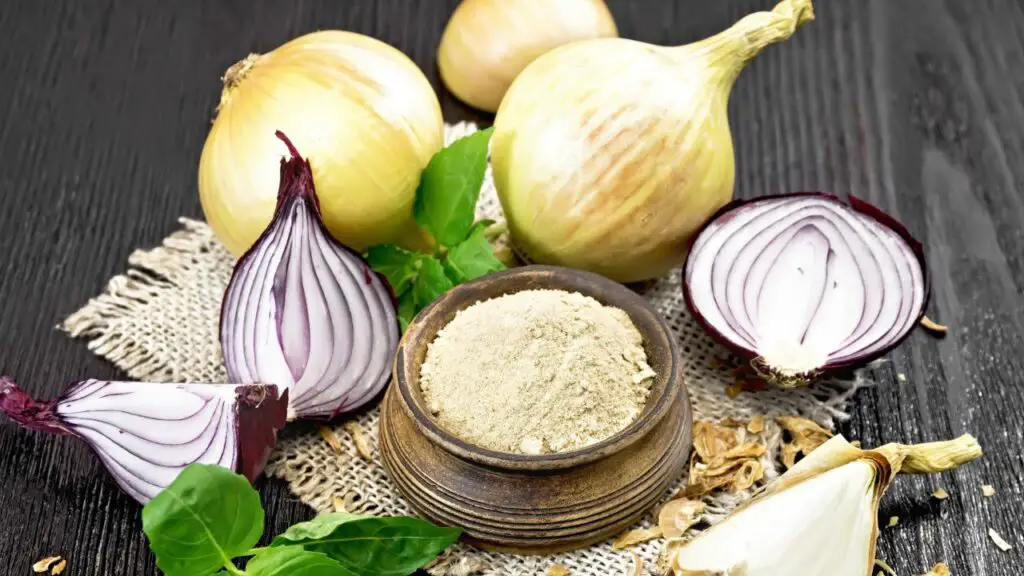
Since onion powder is just dehydrated and grounded fresh onion, there is no significant flavor difference between fresh and onion powder. By following the formula I shared above, you will get the same result by substituting one for the other in the right proportions.
However, remember that onion powder has a potent and concentrated flavor. It’s dehydrated onion, which means a single tablespoon packs as much flavor as a small onion, so keep that in mind.
2. Moisture Changes
The main difference between fresh onions and onion powder is their moisture levels.
Onions are naturally very moist, while onion powder is dehydrated to remove up to 94% of its water content, so your recipe may be missing some liquid if you opt for the latter.
Adding a bit of water could compensate for this difference if it matters for the preparation, but you can also replace it with stock, milk, or whatever other liquid suits your recipe.
3. Texture Changes
Replacing freshly chopped onions with onion powder will subtly change the texture of your recipe since the powder will be imperceptible and won’t leave the tasty tiny chunks of onion you’d otherwise get.
If that’s important for your recipe, consider chopping an ingredient with a similar texture to compensate for the onion. The perfect choice depends on your preparation, but celery or carrots are good alternatives.
4. Portion Size
If your recipe calls for lots of chopped onions and you replace them with onion powder, keep in mind you will get fewer servings out of the food. Chopped onion adds volume, while onion powder takes up less space.
When cooking for many people or if the number of portions is significant, consider compensating for the volume loss with another ingredient.
Is Onion Powder The Same As Dried Onion Flakes?
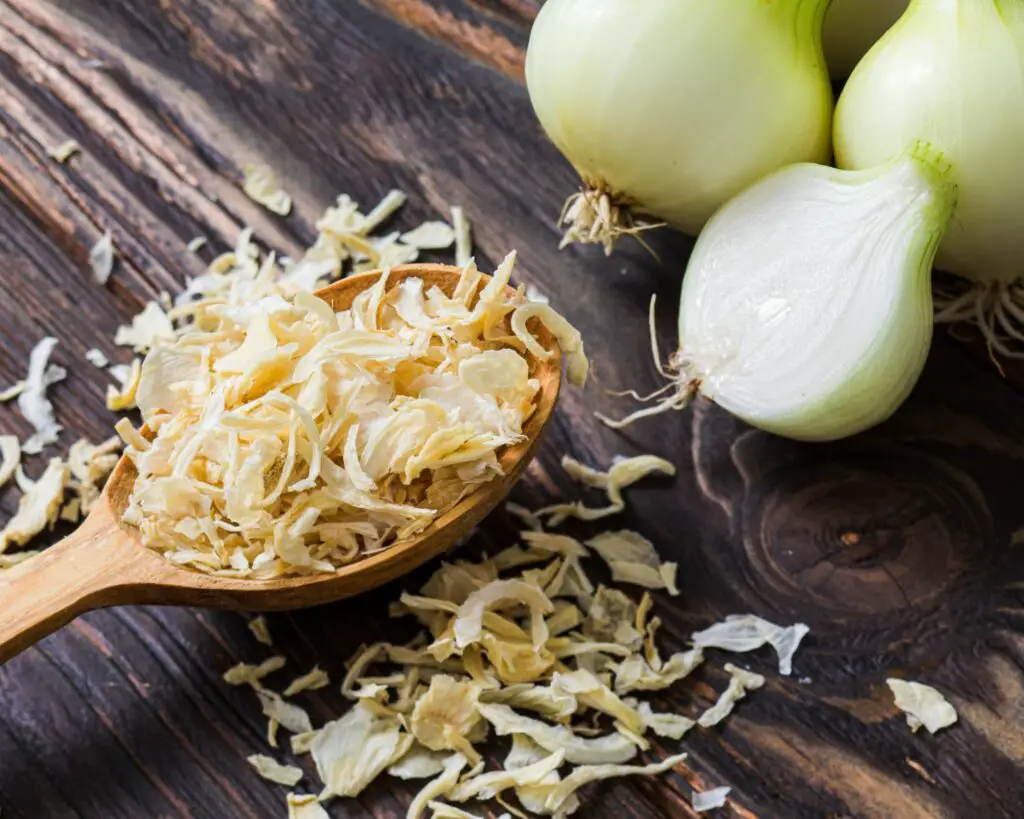
Although they are both dried onion products and replacements for fresh onion, onion powder is not the same as dried onion flakes.
Onion flakes are dehydrated chopped onion pieces kept as such, while onion powder continues that process and requires grinding the flakes into a very fine powder. As such, onion flakes are subtler in flavor than onion powder and can take up much more space.
For example, I previously told you the rule of thumb is one small onion equals one teaspoon of onion powder. In the case of dried onion flakes, one tablespoon is roughly equal to one small onion.
When Is Best To Use Onion Powder Instead Of Fresh Onions?

While the fresh onion is incredibly versatile and can be used in many preparations, onion powder is much more restrictive, and you need to be more mindful of when and where to use it.
For example, onion powder is best used in meals that need to be cooked. Using it in salads or other raw preparations is not advisable since the flavor can be jarring and ruin your dish.
Likewise, onion powder is an incredible substitute if all you need is the flavor of onions. Onion powder tastes the same as regular onions, but it cannot mimic the texture, the size, the bite, or the way it changes the appearance of a dish.
Some ideal dishes for onion powder include:
- Dry rubs and seasonings: The powdered form disperses evenly, providing a consistent flavor throughout.
- Soups and stews: While fresh onions can be used, onion powder ensures a smooth consistency without onion bits, especially in creamy soups.
- Sauces and gravies: Onion powder can help achieve a uniform texture and strong onion flavor without the need for pureeing.
- Marinades: The concentrated flavor of onion powder can penetrate meats and vegetables more uniformly.
- Baked goods (like savory bread): For an even onion flavor without moisture or pieces of onion.
The primary advantage of the onion powder is the potent and consistent flavor without added moisture or texture.
However, it’s important to adjust recipes for potential moisture imbalances when substituting fresh onions.
Tips For Cooking With Onion Powder Instead Of Fresh Onions

Although you can get near-identical results whether you are cooking with onion powder or fresh onions, it’s important to remember that their different textures and formats need different cooking techniques.
As such, keep in mind the following tips to guarantee a perfect meal every time.
- Rather than adding the onion powder all at once, try to incorporate it gradually while you taste it as you go. Since the flavor is so concentrated, a little always goes a long way, and if you’re not careful, you may add far more than you’d like.
- If your recipe asks for sautéing the onions as a base flavor, your best option would be to skip that step if you don’t have fresh onions available. Regular onion powder cannot be sautéed and won’t give you that flavor, but there are commercial sauteed onion powder options that can add that flavor profile if you need it.
- Be sure to mix the onion powder as soon as you incorporate it to ensure an even flavor distribution. If you fail to do this, you risk having pockets of concentrated onion flavor in some servings of your meal.
In Conclusion: More Flavor In Smaller Portions
Onion powder is the most concentrated form of onion you can get. Removing the excess moisture reduces onion to its core flavors and creates a compelling and layered flavor experience.
As such, remember that less is more—onion powder can add a world of flavor with just a tiny teaspoon, so proceed with caution.
And, for the question ‘how much onion powder equals one onion?’ the answer is, typically, one tablespoon for a medium-sized onion. Ensure accurate measurements for optimal flavor.
